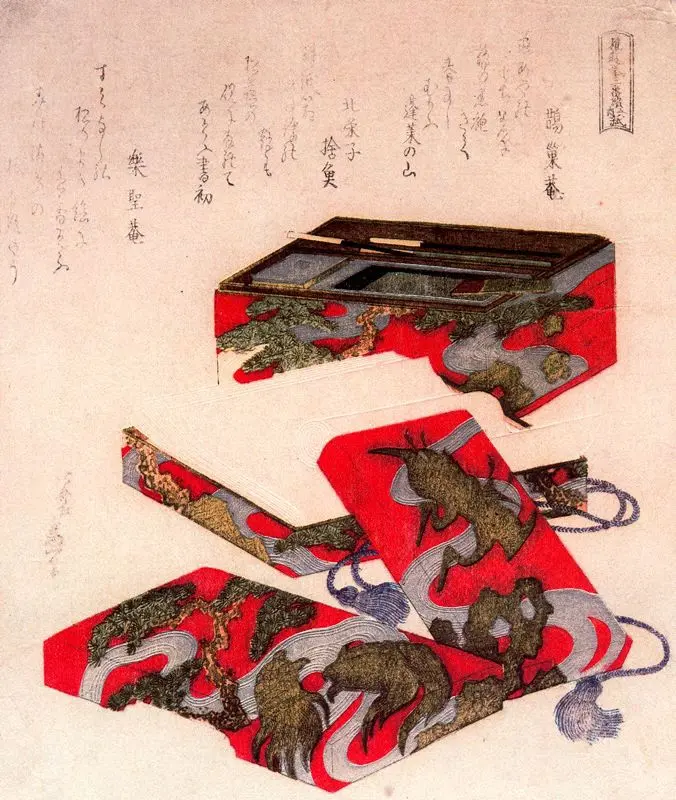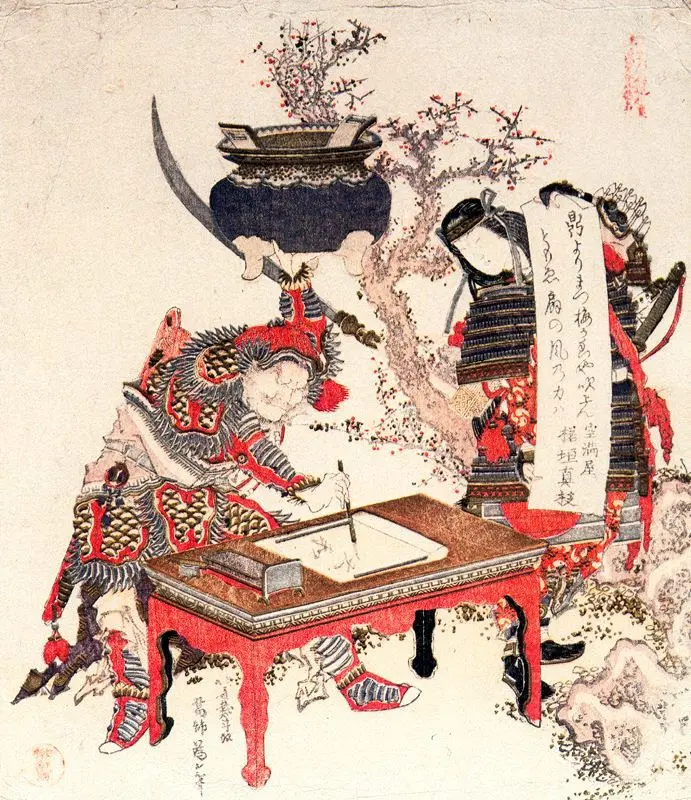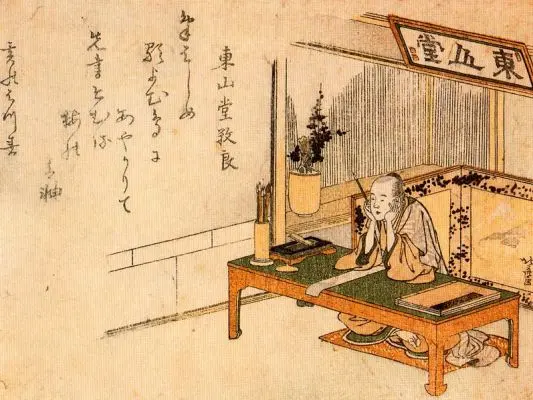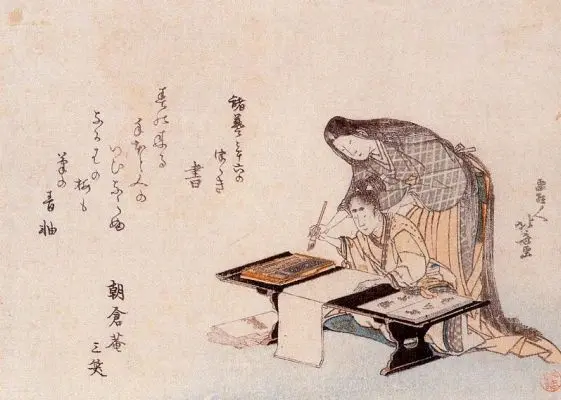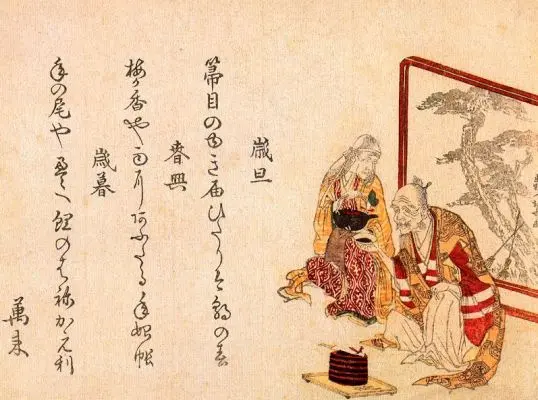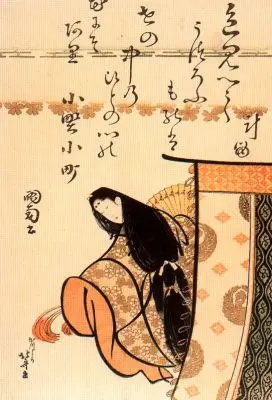Western art little speaks about the Japanese calligraphy clearly confessing that the current scientific language is too poor and unable to describe it. Though, if we take as an excuse the Eastern idea of the written word as a materialized phenomenon, then we could dare to start this conversation; to start our discussion just to understand the phenomenon.
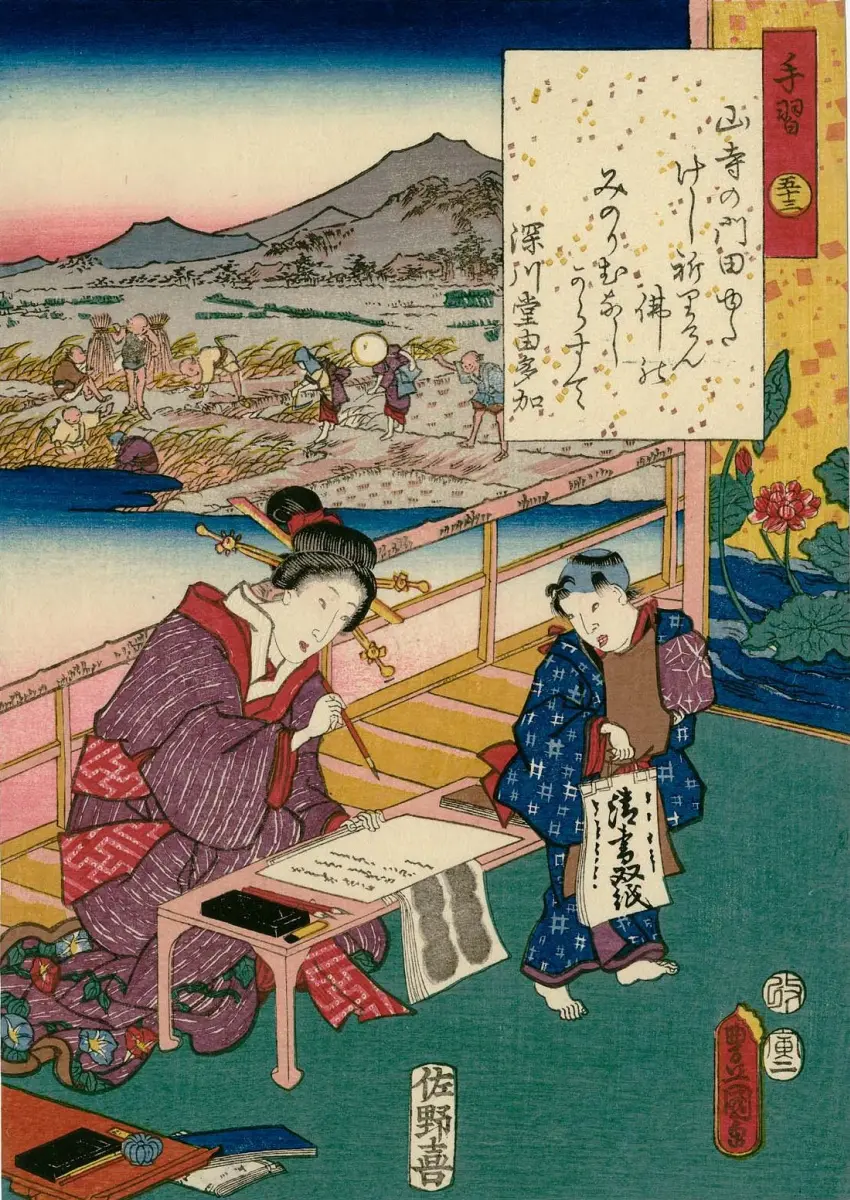
Japanese people rank calligraphy as a fine art and consider it more complicated than painting or engraving art, requiring a special moral preparation. Each work is not focused on the output but it is an intricate process of comprehension of the ancient wisdom and the way of self understanding. At the same time it is a healing and balancing Za Zen.
Tools: paper, ink, brush and ink pot
Materials and tools are the principal elements for technique and means of actualization of any idea or image in each art. Round or chisel brushes, water colors, oil, crayons or a wood block print, any of such tools tunes an artist inspiring him for discoveries, offers opportunities and restricts options, exasperates and at the same time fills with enthusiasm and excitement. No doubt, tools and materials are the objects of passion, collection and admiration.
Minimum number of materials applied for Japanese calligraphy art and their quality and types have not been changed for hundreds of years. The necessary set includes washi (mulberry paper) black ink, a wide brush for for writing characters and narrow brushes for inscribing the author’s name. A piece of paper is usually placed on a black mat and pressed with a heavy metal bar; water is poured into the inkstone and the inkstick is ground against it, mixing the water with the dried ink to liquefy it. Most basic four tools are collectively called in Japan Four Treasures of the Study, they are mulberry paper, a brush, an inkstone and an inkstick.
The photo: rarebook-spb.ru
Calligraphy is the art of painting
Japanese people, without mentioning the others, very often do not understand the meanings of hieroglyphs inscribed on the paper. The meanings they should bear are of no importance. Colors, lines, the power of brushstrokes are the elements of the fine arts and the same elements make part and parcel of the calligraphic painting. The color in its turn is not only in black lines inscribed with ink but also in the white background and the paper itself. White color makes an absolute space implying everything. The artist is immersing into this limited by the edges, the initial and final truth, coming into contact and depicting this interaction with an individual character or a phrase.
A hieroglyph is three dimensional and stereoscopic. Wide lines are dominating and narrow hair strokes are seemed to be hidden on the second and third backgrounds. One portion of ink on the brush makes one character. The brush almost dry leaves some traces in the curve of the character, in some points translucent rays appear on the paper; the ink is smearing revealing the instantaneous contact with the truth.
Calligraphy is the path
It is impossible to describe a super-temporal and instantaneous sense of the Calligraphic art in the terms typical for the Western art history. Calligraphy is a genuine traditional art, which significance is demonstrated in each act of creation. A hieroglyph is a destination of a long spiritual path of a master, which has been lasted long years and is depicted in the most short living and fragile material, which is paper.
According to modern calligraphic artist Morimoto Ryusaki, who explained the subject of the modern calligraphy at the Russian exhibitions, calligraphy is three-dimensional. A brushstroke on the paper makes only a stage of the brush movement sequence as the brush moves in the air and then it continues its movement to the ink. In order to understand the calligraphy you have to observe the process of writing. The perfect formula of the calligraphy is the movement of a conductor’s stick. A conductor never thinks about his stick, he thinks about music as the result of its movement.
History: China and Kukai
Nowadays calligraphy is a compulsory subject at the Japanese nursery school. Students of the upper school can optionally select calligraphy from the additional courses of calligraphy, music or painting. So, we can say that nowadays calligraphy is still ranked as an art. At the Medieval times calligraphy was considered as the most important and intrinsic art, a privilege of the Emperor, monks and clerks.Calligraphy and Philosophy
Hieroglyphic writing system reached Japan by sea in the V century (some historians think it happenedin VII—VIII centuries) from China and Korea together with the Buddhist scriptures. First they were accurately copied without any idea about the principles of the hieroglyphs inscription and their meaning. Though, the expansion of Buddhism required a skill of reading in the Chinese language. Then the calligraphers started applying Chinese characters avoiding their meaning and preserving their sounding only. Those hieroglyphs — syllables made words so familiar for the Japanese people. At the same time the philosophical meaning of the calligraphic art had not been simplified but achieved depth and new significance with Zen Buddhism and was always related to the practices of spiritual development.
Hieroglyphic writing system reached Japan by sea in the V century (some historians think it happened
Buddhist monk Kukai, who lived in the VIII century, invented the kana, the syllabary, systematized thousands of characters, made the way of writing them simpler and designed a unified writing; he was one of the fist calligraphers in Japan, who founded public schools for all social categories. However, many achievements in linguistics and arts attributed to him, were the result of his important intellectual activities. Kukai founded the Shingon or "True Word" school of Buddhism, became bodhisattva and did not die but entered into an eternal samadhi and is still alive on Mount Kōya, awaiting the appearance of Buddha. Buddhist monk Kukai, Emperor Saga, and courtier Tachibana no Hayanari, the first most celebrated calligraphers in the Japanese history, were respectfully known as the Sanpitsu (Three Great Brushes). It is difficult to believe that people of so high rank could be engaged in painting, produced Edo landscapes or performed in the Kabuki theater.
According to the Japanese legend, while in China he had been invited by the emperor to decorate the wall with the calligraphic inscriptions. He demonstrated the amazing ability to inscribe simultaneously five lines of words by using one brush in his mouth, one in each of his hands and one in each of his feet. He decorated five pieces of the wall at the same time.
According to the Japanese legend, while in China he had been invited by the emperor to decorate the wall with the calligraphic inscriptions. He demonstrated the amazing ability to inscribe simultaneously five lines of words by using one brush in his mouth, one in each of his hands and one in each of his feet. He decorated five pieces of the wall at the same time.
Calligraphy is Poetry
The Japanese calligraphy works have never had negativism of any kind. It is obvious, that no one would seek for the truth through depressing and hurting symbols with the negative connotation. Scrolls with only one world inscribed, implying laconic wisdom and lyrical nature are produced for inspiration in searching harmony in the soul of a person, wishing good luck, happiness, peace, balance and serenity.
The Japanese calligraphy works have never had negativism of any kind. It is obvious, that no one would seek for the truth through depressing and hurting symbols with the negative connotation. Scrolls with only one world inscribed, implying laconic wisdom and lyrical nature are produced for inspiration in searching harmony in the soul of a person, wishing good luck, happiness, peace, balance and serenity.
Scrolls with good wishes or small pieces of poetry were placed, for instance, in the tokonoma — a special niche in a Japanese tea-house. The inscription selected for a certain ceremony was discussed during the event. The main idea of the tea ceremony was in its uniqueness at that very moment. This idea was close and understandable for each participant of the ceremony, who was excited of the event and at the same time was sad because of its brevity. Nowadays toconoma with a calligraphic scroll, ikebana or painting and woodblock prints in it is typical for each household.
The prints by famous Japanese artists are often accompanied with the texts, pieces of poetry in the center of their composition. The painting usually illustrates the phrase but not the phrase describes the picture.
Modern Calligraphy
After a large number of Americans and Europeans appeared in Japan in the XIX century, the country isolated and closed that time, had changed tremendously: its army took part in several wars, Japanese people learnt about European clothes, listened to the European music and generations of the impressionist artists appeared there. The calligraphic art technically coinciding with the European graphic art acquired an abstract representation in the modern form preserving its traditions and spirituality. Modern calligraphers exhibiting their works all over the world demonstrate their black and white scrolls at the museum and showcases, give master-classes, show the process of writing applying wood, fabrics, color, paper and leaf-gold for their works.
Calligrapher Morimoto Ryusaki, for instance, demonstrates the same hieroglyph written in different way — four stylized depictions of the hieroglyph "Raku" meaning delight and happiness.
Pictures used in the collage: ura-inform.com
Pictures used in the collage: ura-inform.com
In the photos above and below: The exhibition of the modern calligraphic art at the National Art Center in Tokyo; each piece of work is recognizable and distinguished even without knowledge of their meaning. Intellectual and emotional efforts are required but at the same time they are required for some other European exhibition of the modern art. Though the translation of each character is provided.
Photo: tokyobling.wordpress.com
Photo: tokyobling.wordpress.com

The last piece contains this hokku: "Like a fish in the profound depths of the ocean if you were not shining from within, you would not find any other light around".
The title illustration: Utagawa Kunisada, Illustration for The Tale of Genji, Chapter 53. Tenarai (The Writing Practice)
The Author: Anna Sidelnikova
The Author: Anna Sidelnikova







